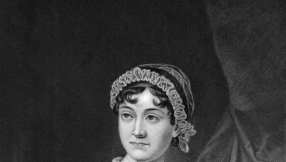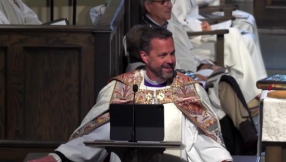An ancient colossus discovered in a working-class district of Cairo might be the work of a Pharaoh who ruled in biblical times, scholars believe.
The eight-metre tall figure was originally thought to be of Ramses II, one of Egypt's most famous pharaohs, who ruled around 3,000 years ago. It was found by workmen in a muddy ditch on the site of an ancient temple.
But because of an inscription found on the statue reading 'Strong Arm', Egyptian scholars now believe it may be of a later pharaoh, Psammetich I, who ruled from 664 to 610 BC – and Psammetic ruled at a very interesting time in biblical history.
When Psammetich took over as Pharaoh, Egypt was under the control of the savage Assyrian Empire. But he was a powerful ruler who succeeded in uniting Upper and Lower Egypt and freeing it from Assyrian domination.
One of the Judean kings who may have had dealings with Psammetich was Mannasseh, the son of the godly King Hezekiah, who reigned probably from 687-642 BC. He was an appalling ruler who brought back the worship of pagan gods and persecuted prophets; he even practised child sacrifice. The biblical account of his reign is in II Kings 21:1–18 and II Chronicles 32:33–33:20. He is also mentioned in Jeremiah 15:4 as the cause of judgment on Judah for his crimes.
Mannasseh was one of the allies of the Assyrians in their war against rebel Egyptians. It was in the wake of this war that Psammetich succeeded in unifying the country and regaining its independence.
Psammetich's reign also overlapped with the prophets Zephaniah and Jeremiah, who also prophesied during this time of international instability. But his greatest influence on Judah may have come the year after his death in 610 BC. The following year the godly Josiah, who had succeeded his father Amon as a child after Amon had reigned only two years, led the army of Judah out to war. Josiah had discovered the book of the Law, restored Temple worship and 'walked in all the way of David his father, and turned not aside to the right hand or to the left' (2 Kings 22:2).
But when Psammetich, the mighty warrior whose prestige would make anyone think twice about going up against him, died, he thought he stood a chance of defeating his successor. Pharoah Necho II led an army to help support the Assyrian against the Babylonians, and had to pass through Judah to do it. Perhaps sensing an opportunity to be free of Assyrian control, Josiah tried to prevent him. They met at Megiddo, where the Judeans were defeated and Josiah killed (2 Kings 23:29). His death ushered in a period of decline under weak and foolish kings that was to lead to the extinction of the kingdom and exile in Babylon.
Psammetich is not mentioned in the Bible, though some scholars believe he is the 'cruel master' mentioned in Isaiah 19:4. But his reign was the backdrop to some of the key events of Israelite history.













